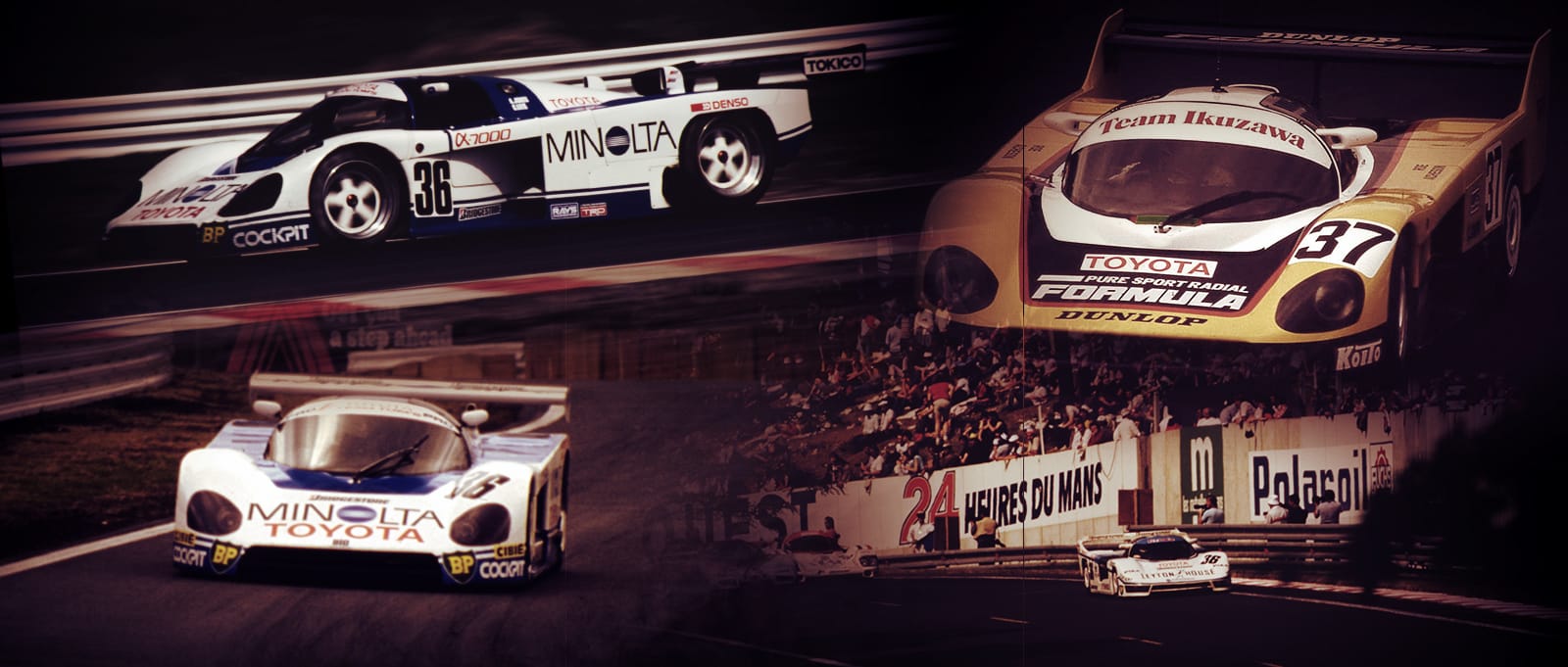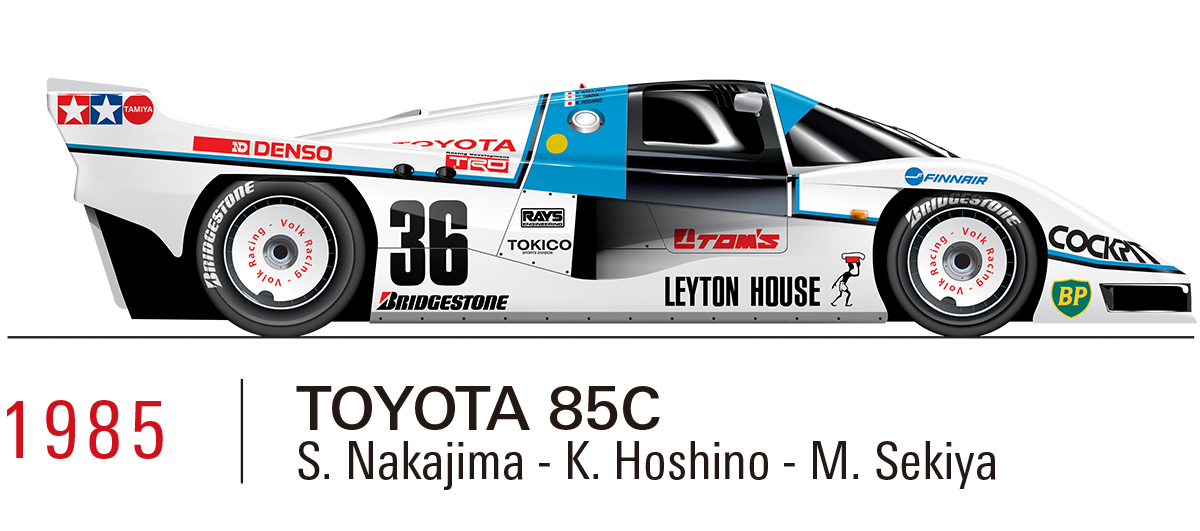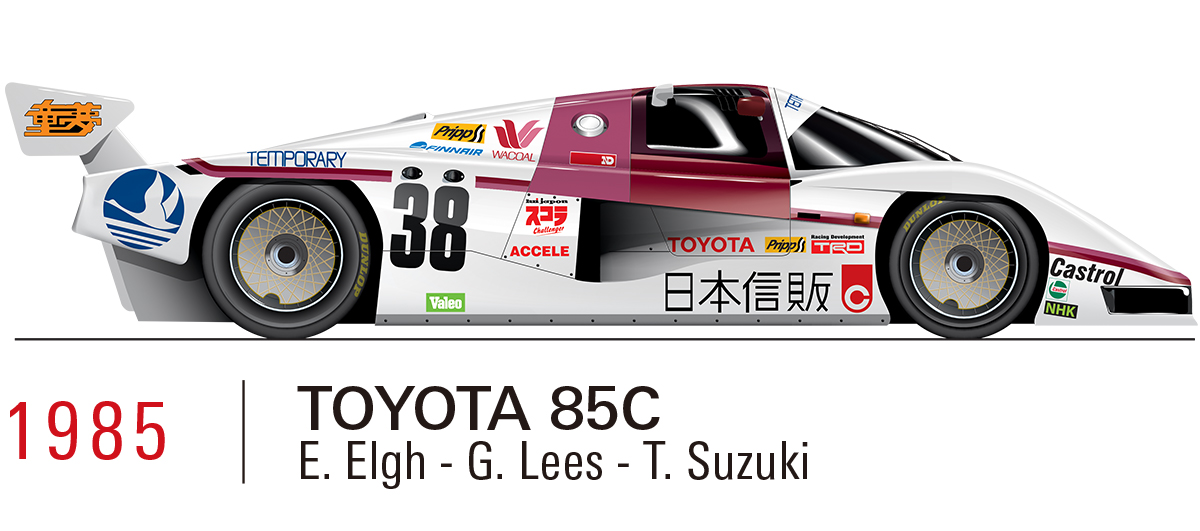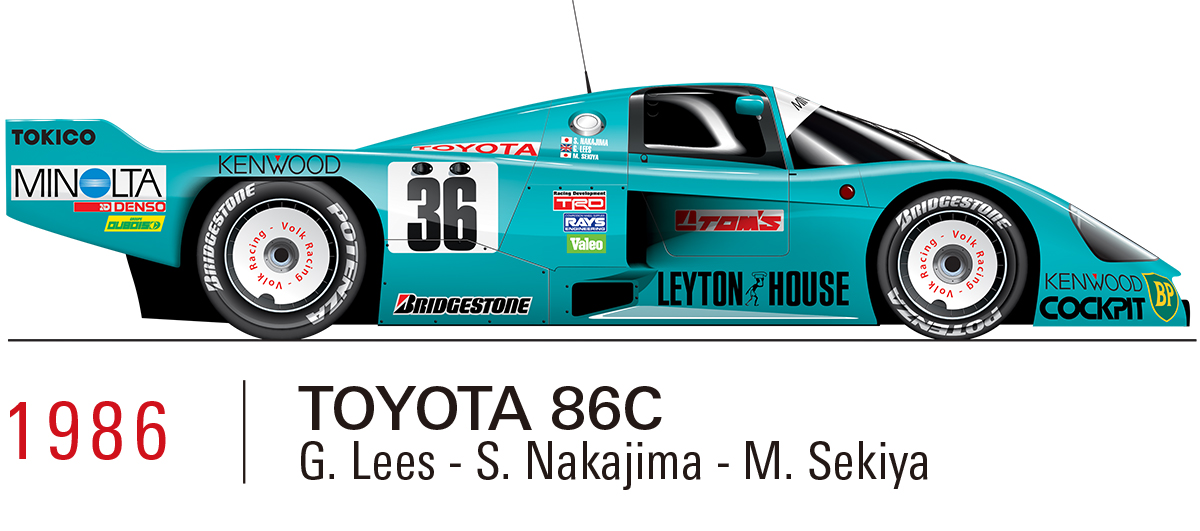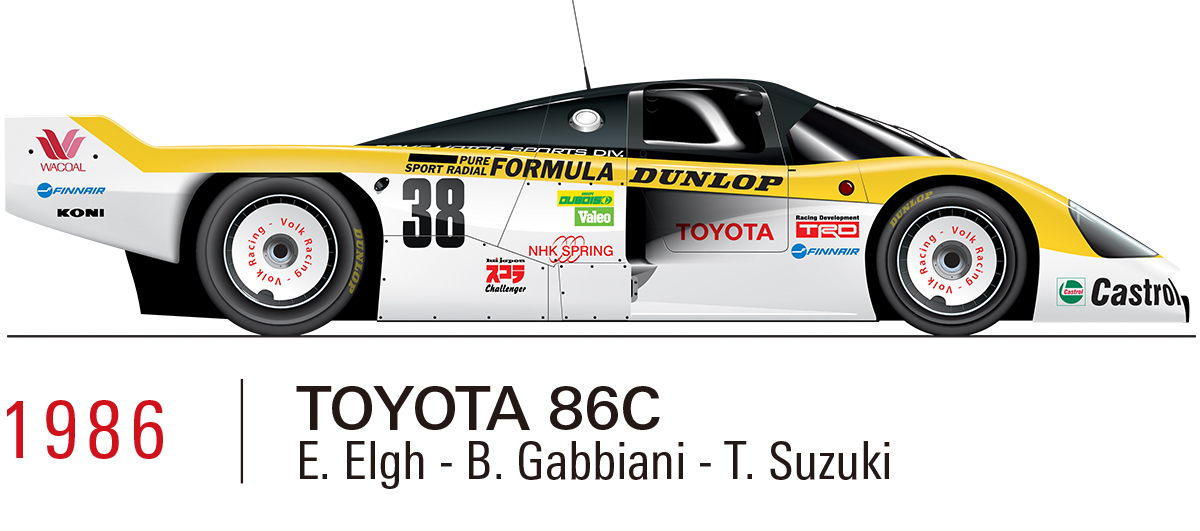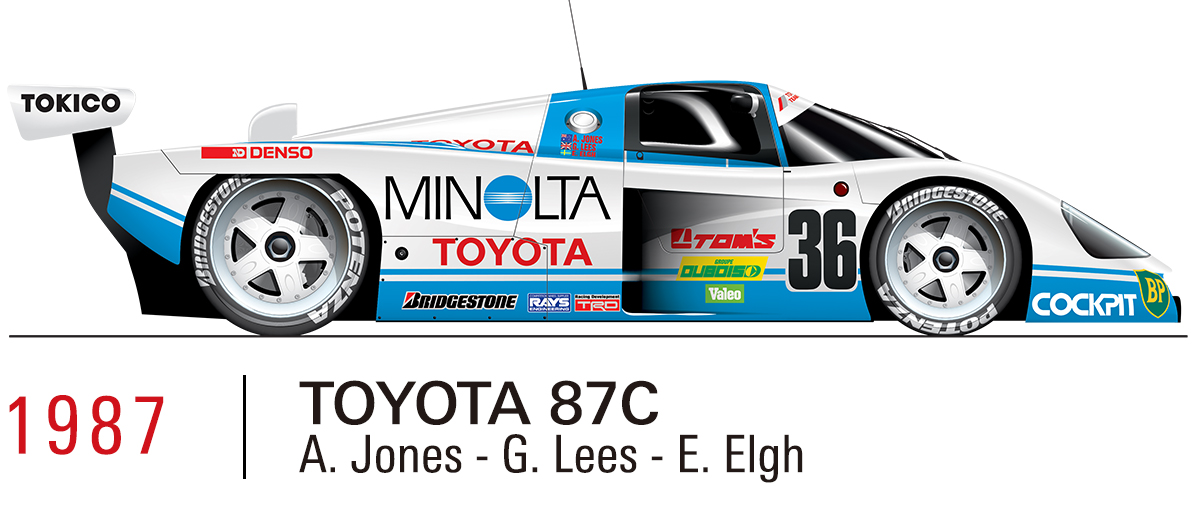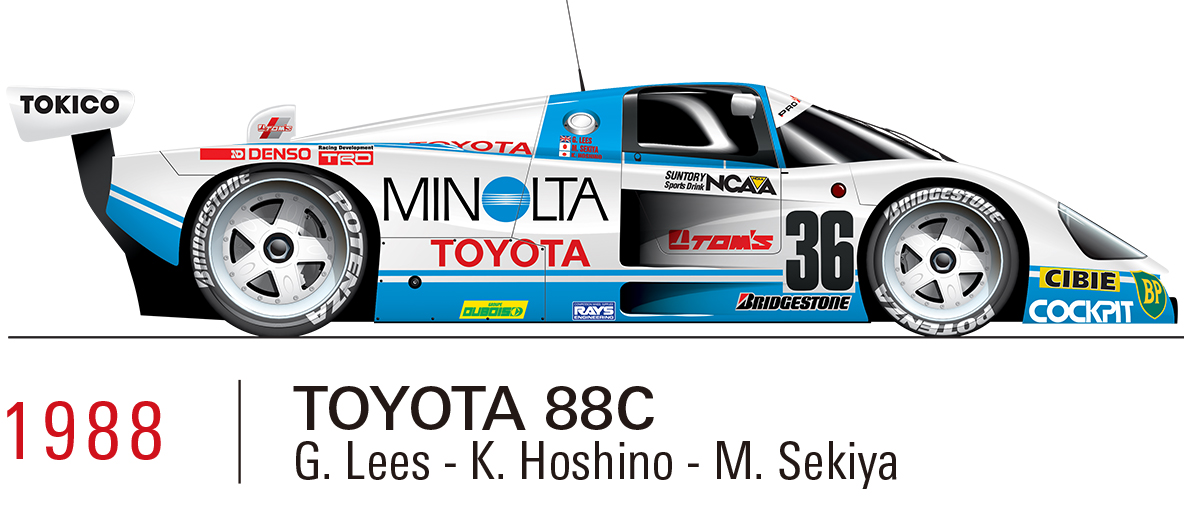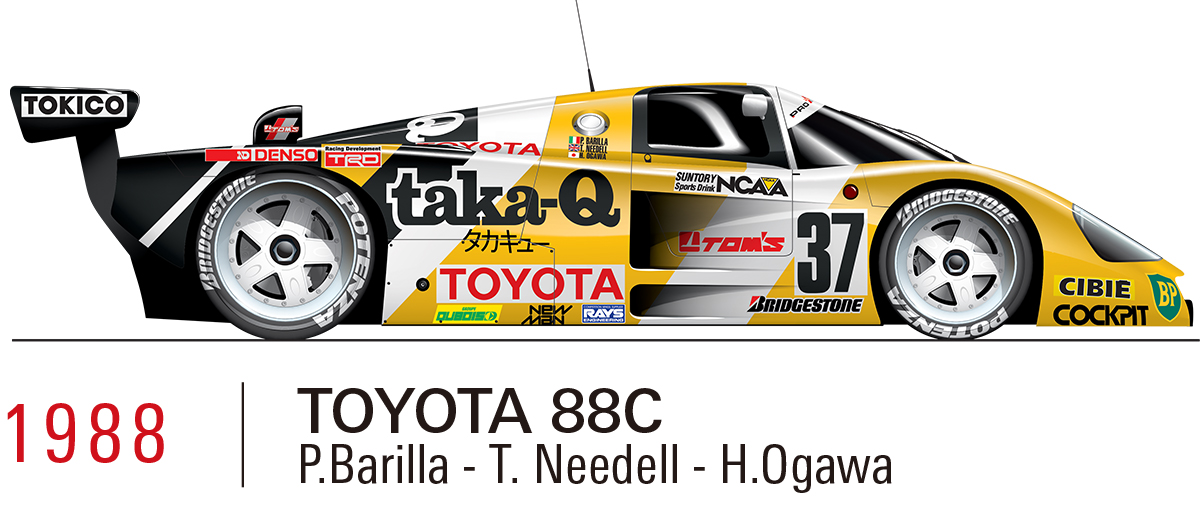The History of TOYOTA at Le Mans
Looking back over a long history of unending challenges
1985-1988
The Le Mans challenges begin with production model-based small-displacement engines
In 1985, exactly ten years after the first entry at Le Mans with a Toyota engine in the Sigma MC75, two Toyota Tom's 85C machines in the 24 Hours of Le Mans. Of the two 85C cars starting the race with a 2.1-liter 4-cylinder turbocharged engine (Toyota 4T-GT) mounted on a machine with a Tom's/Dome aluminum monocoque, one was able to successfully complete the 24-hour race in 12th place. This was to be the first page of Toyota's history of challenges at the 24 Hours of Le Mans, which continue to this day.
The next year (1986), two further-developed Toyota Tom's/Dome 86C machines were entered in the Le Mans race. With the shape of the machine's body completely redesigned for a big increase in downforce, one of the machines had to retire from the race with engine trouble before dawn, while the other raced on to take 7th position in the latter stages before it was struck with a turbo problem that forced it also to retire with just one hour remaining in the race.
In 1987, Toyota strengthened its race program. The team name was changed to Toyota Team Tom's(TTT)and the car was a further- machine advanced version of the previous year's, which was now designated the Toyota 87C. This 87C mounted a 2.1-liter 4-cylinder turbocharged engine (Toyota 3S-GT) with a big boost in power over the previous model, with which it had beaten the long-dominant Porsche to win the Fuji 1000km race of the All-Japan Sports Prototype Car Endurance Championship (JSPC). In the following month's 24 Hours of Le Mans, two 87Cs ran strongly in 5th and 6th position in the early stages of the race. However, both cars had to retire from the race before its sixth hour.
Nonetheless, a further evolution of this model called the 88C competed in the 1988 24 Hours of Le Mans, with the two entries able to make a strong showing by finishing 8th and 10th respectively (best by Japanese makes) in the qualifying, despite the relatively small engine displacement, and they also ran in and finish the full 24-hour race. Here too, they finished top among the Japanese cars in 12th and 24th place respectively.
